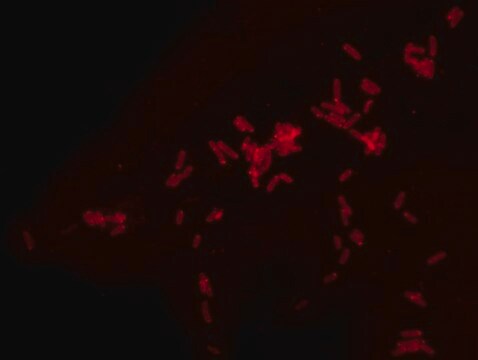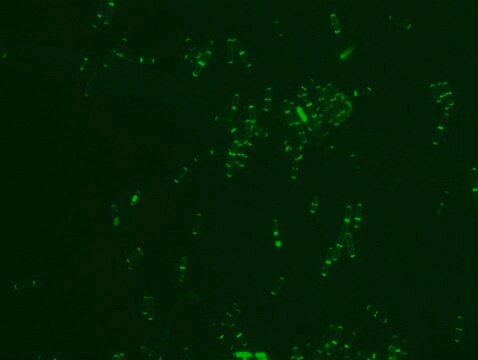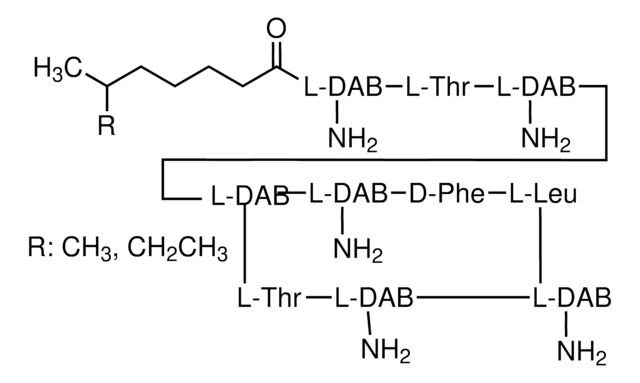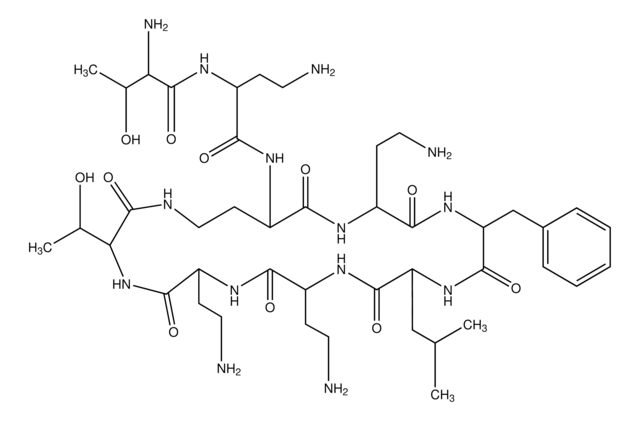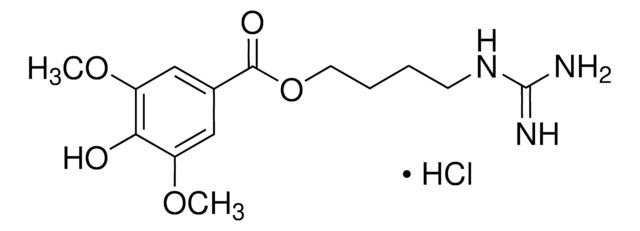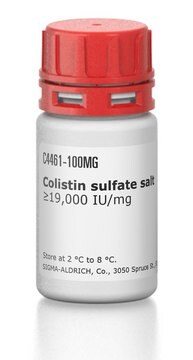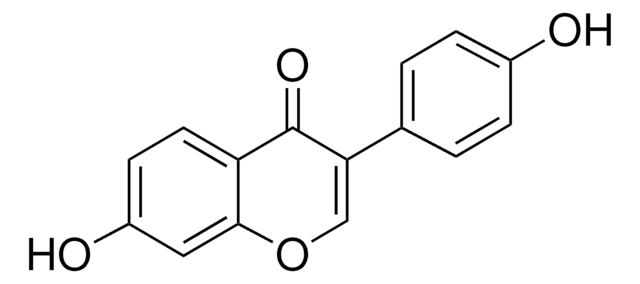SBR00029
Dansyl labeled polymyxin B Ready Made Solution
for fluorescent microbial imaging, 1.5 mg/mL in H2O
Synonim(y):
DSL-PMB, DSL-PMX, DSL-PxB
About This Item
Polecane produkty
Poziom jakości
Formularz
solution
dostępność
not available in China
stężenie
1.5 mg/mL in H2O
kolor
colorless to light brown
przydatność
suitable for (Fluorescent detection of gram-negative bacteria)
suitable for (Microbiome)
suitable for microbiology
Tryb działania
cell membrane
Warunki transportu
ambient
temp. przechowywania
−20°C
Opis ogólny
Zastosowanie
- as a fluorescent probe to study polymyxin mode of action and its pharmacokinetics
- in research and to develop new active derivatives of Polymyxin against multi-drug resistance Gram-negative infections
- to measure LPS binding affinity by fluorometric displacement assay
- Antimicrobial resistance research.
- Bacterial visualization and imaging.
- Parent antibiotic mode of action research and new antibiotic discovery.
- Toxicity studies.
- Research of bacterial infections and tracking its uptake in vivo.
Działania biochem./fizjol.
Cechy i korzyści
- High-quality antibiotic suitable for multiple research applications
- Ideal for Cell Biology, Metabolomics, and Biochemical research.
Komentarz do analizy
- Dansyl Labeled Polymyxin B Ready Made Solution is light sensitive.
- It is recommended to avoid freeze-thaw cycles of PMB-DSL Ready Made Solution.
- Dansyl Labeled Polymyxin B Ready Made Solution (1.5 mg/mL) can be diluted 1:50 in PBSX1 (Sigma#D8537) to achieve 30 μg/mL final concentration for staining. The above concentration of DSL-PMB was used for E. coli staining see image.
- Fluorescence Microscopy application: Dansyl Labeled Polymyxin B Ready Made Solution excitation (Ex) wavelength is 330-340nm resulting in emission (Em) range of 540-600nm (λmax=570nm).
Inne uwagi
Kod klasy składowania
12 - Non Combustible Liquids
Klasa zagrożenia wodnego (WGK)
WGK 1
Wybierz jedną z najnowszych wersji:
Certyfikaty analizy (CoA)
Przepraszamy, ale COA dla tego produktu nie jest aktualnie dostępny online.
Proszę o kontakt, jeśli potrzebna jest pomoc Obsługa Klienta
Masz już ten produkt?
Dokumenty związane z niedawno zakupionymi produktami zostały zamieszczone w Bibliotece dokumentów.
Nasz zespół naukowców ma doświadczenie we wszystkich obszarach badań, w tym w naukach przyrodniczych, materiałoznawstwie, syntezie chemicznej, chromatografii, analityce i wielu innych dziedzinach.
Skontaktuj się z zespołem ds. pomocy technicznej